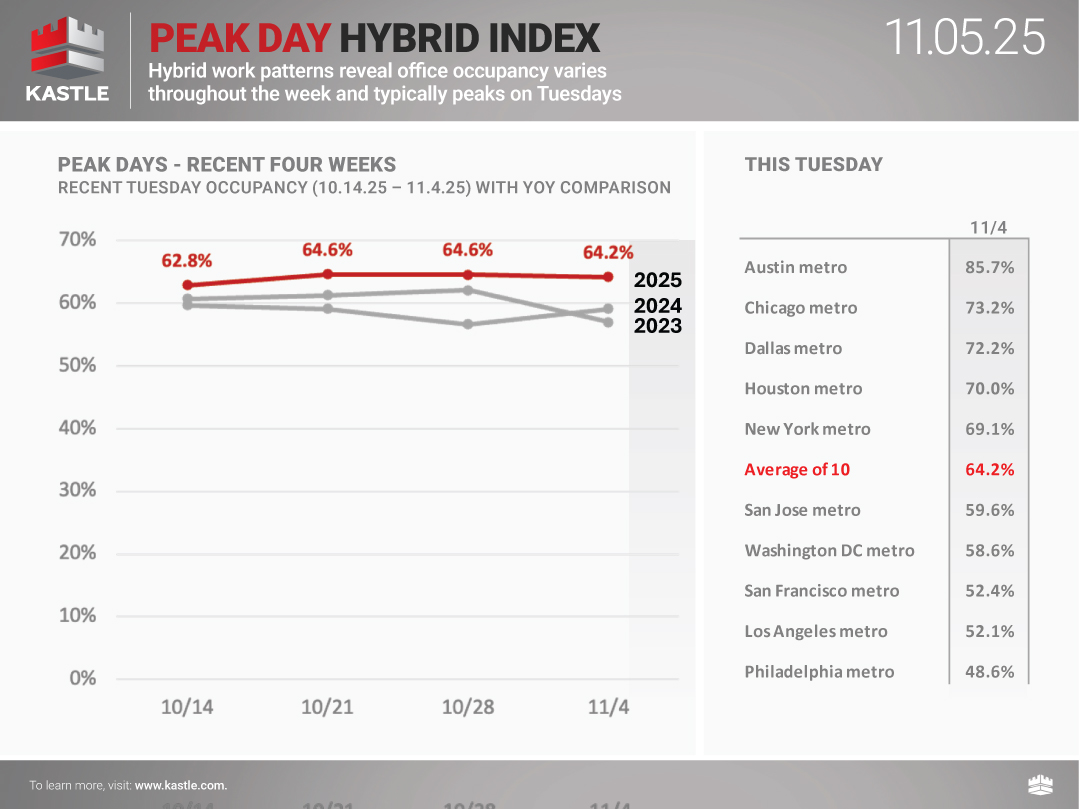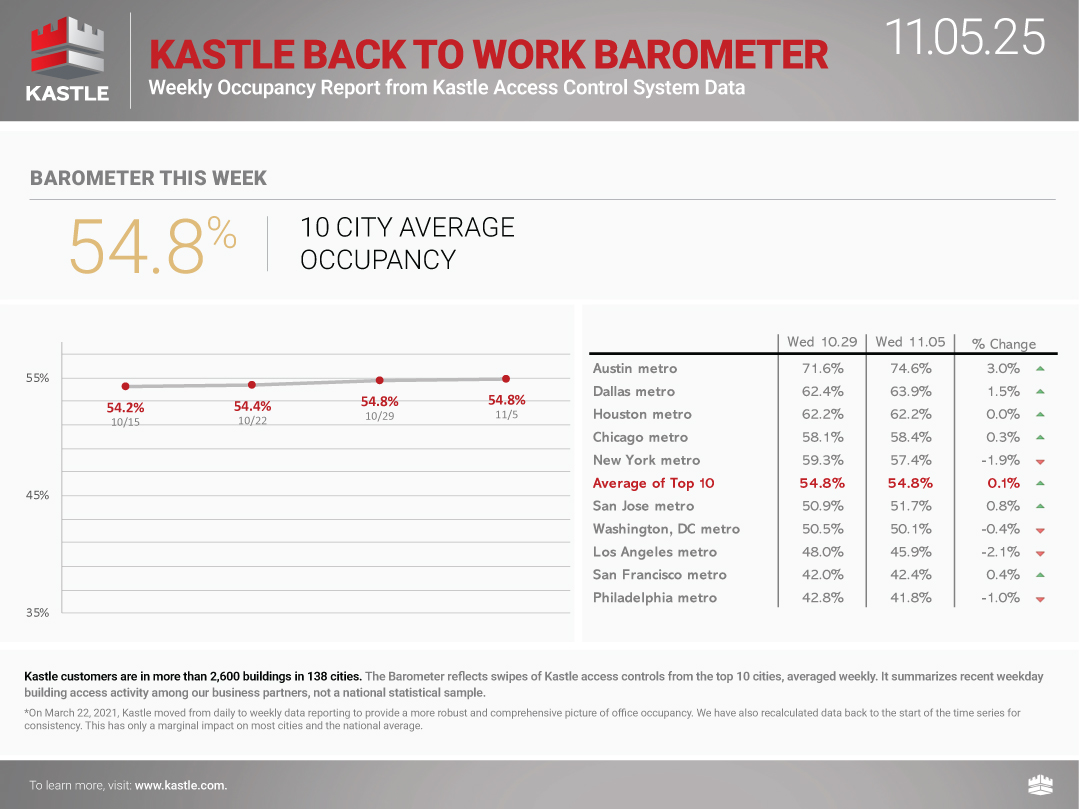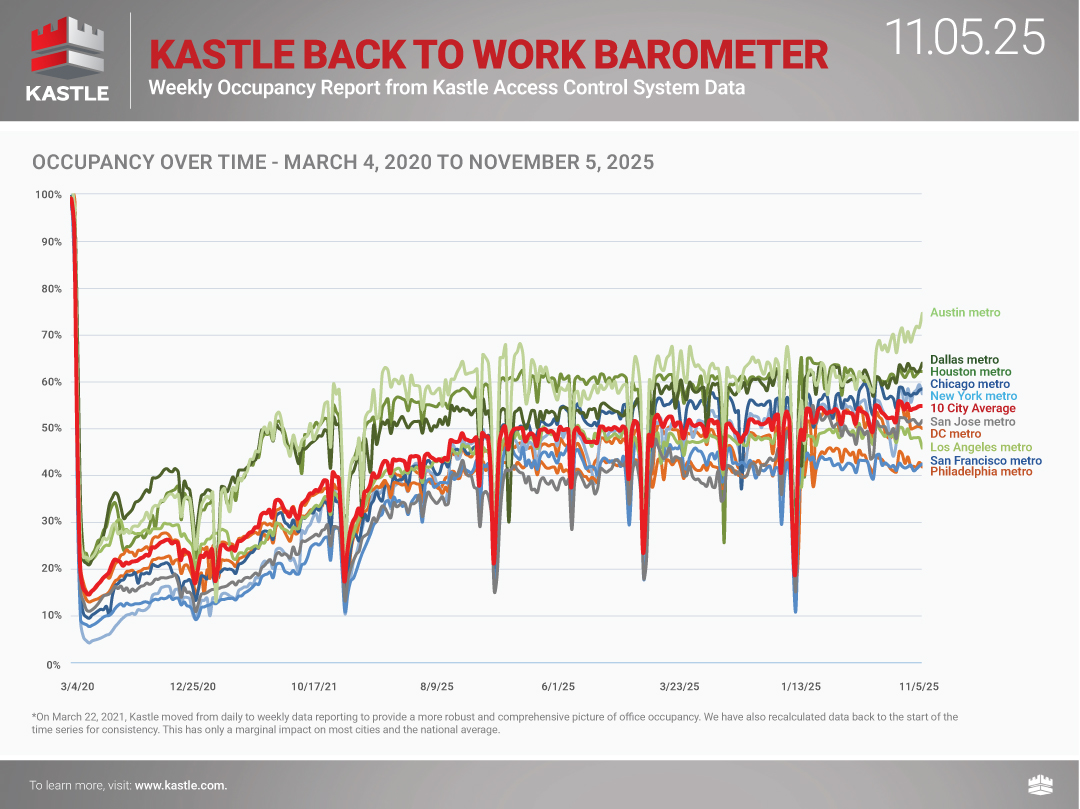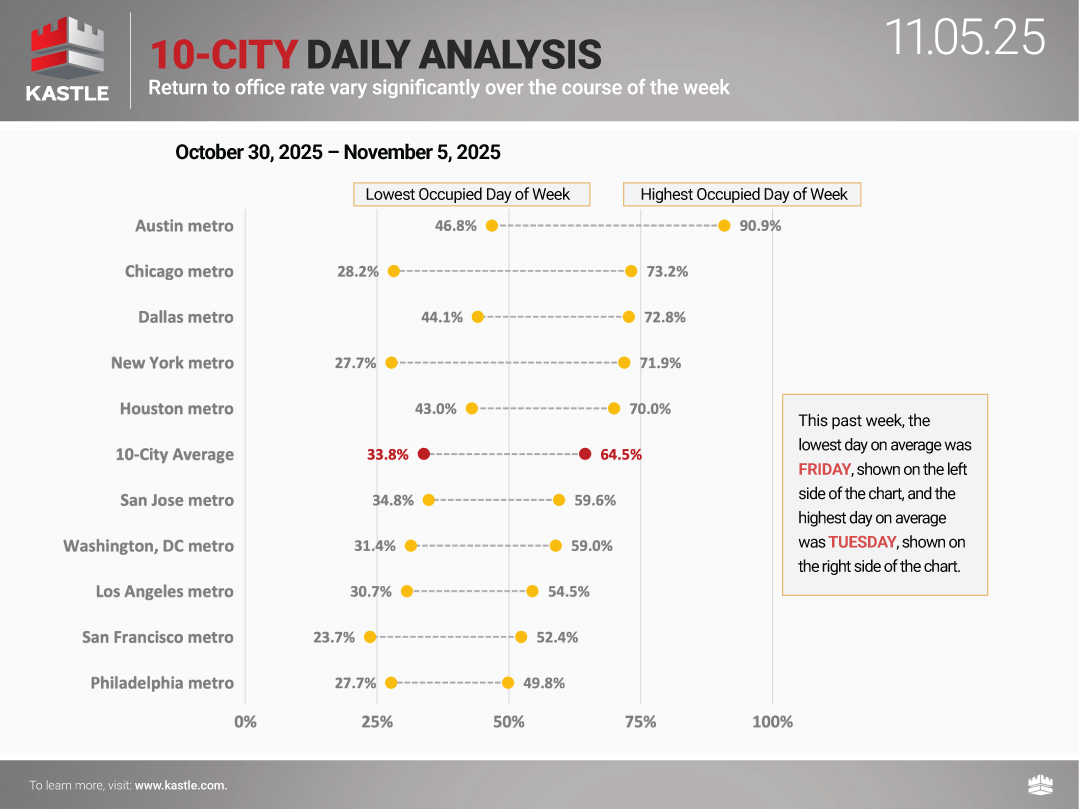Hybrid work patterns reveal occupancy varies throughout the week with Tuesdays typically being the highest day of the week and Fridays being the lowest. The chart below tracks Tuesday occupancy over time in ten cities and provides a new dimension to the weekly Barometer report. The Peak Day Hybrid Index will now be published weekly, offering a wider aperture into the full picture of workplace occupancy.



Get Weekly UpdatesYou can now track the Return to Work Barometer on the Bloomberg Terminal, available under {ALLX KASL<GO>}


Class A+ Occupancy
Among workers in A+ Class buildings, the drop for the week in advance of Thanksgiving was more than 21 points, with their average dropping to 57.1%.
Peak Day
Peak occupancy this past week took place on Thursday the week prior to Thanksgiving, hitting 60.3% that day. Friday saw an appreciable drop, as usual, to 36.6%, more or less the same as the week prior. While Austin TX saw an uptick Friday (up 3.3 points, to 51.3%), most cities were either flat or down a bit from the week prior suggesting the holiday was already acting as a mild drag on office work. Thanksgiving week saw occupancy collapse in city after city, down nearly 9 points on Monday, 20 points on Tuesday, and nearly 37 points on the Wednesday before Thanksgiving. Austin TX stood out with a more than 51 point drop on that day. Chicago experienced a nearly 48 point drop, and New York was nearly 45 points below the Wednesday prior.
Weekly Average
Workers took off time for the Thanksgiving holiday this past week, with the 10 City Back to Work Barometer dropping more than 13 points, to 42.6%. The drop began before the holiday, for example, on the Tuesday before, workers in all buildings experiencing a 20 point drop for the day, to 45.3%.
Every city on the Barometer experienced drops in occupancy around the holiday, mostly similar in magnitude.
Methodology
To provide some clarity on the issues facing American businesses, Kastle has been studying keycard, fob and KastlePresence app access data from the 2,600 buildings and 41,000 businesses we secure across 47 states. We’re analyzing the anonymized data to identify trends in how Americans are returning to the office.
We have tracked and published U.S. office occupancy status in Kastle-secured commercial properties since the beginning of the Covid crisis in early 2020. We continue to seek to help companies navigate the ever-changing workplace landscape and adjust to the ‘new normal’ of office occupancy. Whether full-time hybrid or in-person, our commitment remains to helping American businesses understand how average workplaces are being attended weekly, monthly, and annually.
Kastle’s reach of buildings, businesses and cardholders secured generates millions of access events daily as users enter office complexes, and individual company workspaces. The Barometer weekly report summarizes access control data among our business partners in ten major metro areas, not a national statistical sample. Charted percentages reflect unique authorized user entries in each market relative to a pre-COVID baseline, averaged weekly.*
*On March 22, 2021, Kastle moved from daily to weekly data reporting to provide a more robust and comprehensive picture of office occupancy. We have also recalculated data back to the start of the time series for consistency. This has only a marginal impact on most cities and the national average.
Click here for more information about the Barometer methodology and FAQ
Ready to make your property smarter and more secure? Connect with Kastle's experts to find the perfect solution tailored to your needs.
